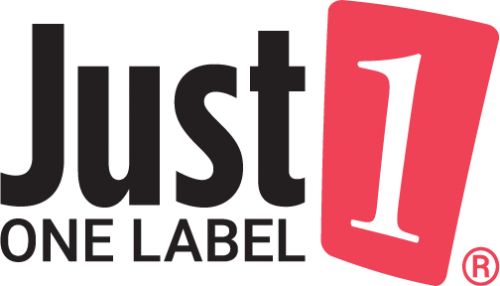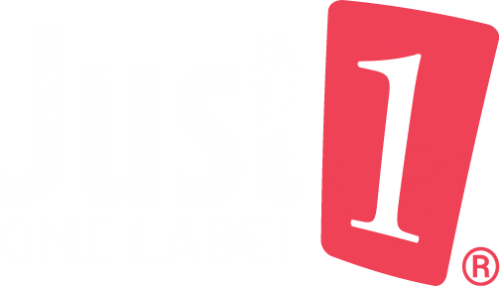Flexography vs. Digital Printing
There is a saying in regards to traditional printing that, “the first sheet costs more than the next 1,000.”
That’s true, but not just for a printer’s bottom line. There’s also an environmental impact that should be considered.
The easiest way to explain the environmental impact and savings by upgrading to a digital printer can be shown during three key areas of the printing process. Before, during, and after the print run.
“Makeready”
The material used while making all the necessary adjustments before printing the actual run. Also referred to as set up.
5 to 10x the waste.
Traditional offset printing can consume 100’s of feet of material during the setup process of a single print job.
Digital printing may only require a handful of frames to get set up and if multiple jobs are ganged together the waste becomes exponentially lower. Depending on the number of print jobs run in a single day for a print shop this could equate to thousands of feet of material heading to landfills.
This happens almost every time that a job is set up and and there are thousands of these jobs run across the country every single day.
“Overage”
Excess or surplus over what is normal, ordered, or required. Also referred to as “Over Run.”
5 to 10 % more every time you order.
To take it a step further we’ve developed a method of printing that yields an unprecidented order to print ratio of 1 to 1. In the simplest terms this means that what you order is what you get.
If you order 1,000 labels why should you get 1,100 and more importantly where do those labels end up? A typical manufacturer can produce upward to a million units in a month. Even at an average of 5% over run we’re looking at a possible waste impact of 600,000 labels annually.
“Deinkability”
The measure of how effectively ink can be removed from paper for recycling in a “Deinking” process.
Waste reduction at the end of a products lifecycle is equally as important.
Papers printed with HP ElectroInk version 4.0 are recyclable, based on typical two-loop deinking processes.
There has been an improvement in deinking performance compared to older generation ElectroInk, based on innovations from the Indigo division of HP. The Indigo division continues to fund research on deinkability by considering not only ElectroInk formulation approaches, but also the influence of paper type, deinking process variables and scaled-up experiments that model the industrial process more directly.
Presently, the Indigo division’s R&D and manufacturing facilities supply 40 tons a month of HP ElectroInk-printed test pages to paper processing facilities, where they are successfully deinked and recycled.
“Sustainable Substrates”
HP Indigo printing presses commonly print on a variety of substrates certified by HP Indigo and environmental organizations. Highly sought after media with FSC, SFI and PEFC accreditations are readily available from many mills and merchants.
In addition, products made with recycled fiber, wind energy and carbon neutral manufacturing processes are readily available and provide customers with sound media choices for their clients and the environment.
“Direct to Print”
Avoiding the waste and other environmental impact of long runs in conventional printing: Digital printing uses digital artwork and files (directly from a computer) without the need for printing plates photographic films and associated chemical waste, including chemical disposal, fume extraction and storage of previously printed plates and film.
“HP ElectroinkTM”
Are there any listed air contaminants in ElectroInk?
There are no toxic air contaminants in HP ElectroInks as defined in the California Toxic Air Contaminants list or in the Federal Hazardous Air Pollutants list. In addition, Indigo ElectroInk meet the requirements of the Nordic Swan ecolabel for use on printed matter. The Swan criteria include requirements as to chemicals, emission to air and water, and waste treatment.
- HP Indigo ElectroInks comply with the Stockholm Convention on Persistent Organic Pollutants.
- HP Indigo ElectroInks comply with the Montreal Protocol on Substances that Deplete the Ozone Layer.
- No California Proposition 65 ingredients are used in HP Indigo ElectroInks.
- HP Indigo ElectroInk meet the requirements of the Nordic Swan ecolabel for use on printed matter. The Swan criteria include requirements as to chemicals, emission to air and water, and waste treatment.
- HP Indigo ElectroInks comply with the Stockholm Convention on Persistent Organic Pollutants.
- No chemicals requiring Prior Informed Consent under the Rotterdam Convention for use in International Trade are present in the ElectroInks.
- HP Indigo ElectroInks comply with the Montreal Protocol on Substances that Deplete the Ozone Layer.
- HP Indigo ElectroInks are not classified as Dangerous Goods under International Air Transportation Association Regulations.
- There are no air contaminants in HP ElectroInk as defined in the California Toxic Air Contaminants list.
- No California Proposition 65 ingredients are used in HP Indigo ElectroInks.
- Used ElectroInk cartridges are not classified as Hazardous Waste in the USA, including California.

